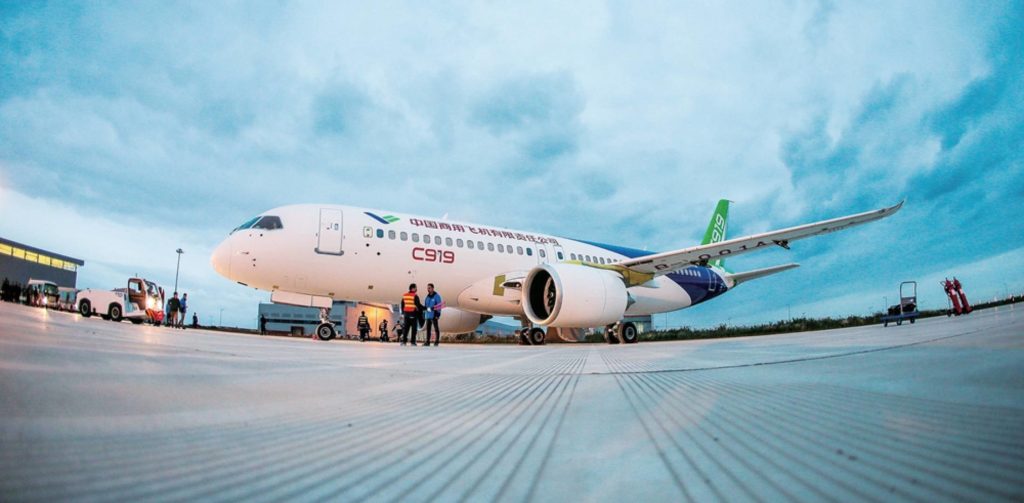




18 Sep 2025
End-of-Life Assets: From Sunset to Second Life
The end of an aircraft’s operational life was once viewed as the closing chapter in a straightforward story: retire the jet, tear it down, salvage what you can, and dispose of the rest. But in today’s aviation leasing environment, the twilight years of an aircraft have become less about closure and more about reinvention. What was once a liability is now being reframed as an opportunity from part-out and component resale to recycling and even sustainable material recovery.
For lessors, this shift is more than an operational detail; it represents a strategic frontier. With rising demand for used serviceable material (USM), tightening environmental regulations, and investors watching closely, the way end-of-life assets are managed now carries both financial weight and reputational implications.
So, what does it take to turn sunset into second life? Let’s explore how teardown, part-out, and recycling are evolving into revenue opportunities rather than simple disposal challenges.
Why End-of-Life Strategy Matters for Lessors
Aircraft are long-lived assets, often flying for 20–25 years before retirement. But unlike many other capital-intensive assets, an aircraft doesn’t simply fade into obsolescence; its parts, components, and materials retain value well beyond its flying years.
For lessors, the ability to extract this value is crucial for several reasons:
- Residual Value Protection - Maximising returns at the end of life supports long-term asset profitability.
- Demand for USM - Airlines are increasingly turning to used parts as a cost-effective alternative to new OEM components.
- Sustainability Pressure - Regulators, investors, and the flying public expect greener asset lifecycles, including responsible recycling.
- Risk Mitigation - Having structured end-of-life plans ensures lessors avoid stranded assets and disposal bottlenecks.
In short, the end-of-life phase has become a strategic consideration, not just a logistical one.
From Retirements to Revenue Streams
Historically, retiring an aircraft was about cost control: dismantle it quickly and minimise storage and disposal expenses. Today, lessors recognise that a structured teardown and resale strategy can deliver tangible financial gains.
- Part-Out Value: High-demand components such as engines, landing gear, avionics, and auxiliary power units (APUs) can be resold for significant margins.
- Serviceable Material: Overhauled or certified USM extends the lifespan of other in-service aircraft, creating an aftermarket revenue stream.
- Inventory Management: Strategic allocation of recovered parts strengthens relationships with operators who depend on cost-effective spares.
The USM market alone has been projected to grow into a multi-billion-dollar sector, driven by both cost pressures on airlines and sustainability goals across the supply chain. Lessors who can orchestrate end-of-life part-out effectively are not just minimising losses they’re actively creating profit.
The Environmental Dimension: Beyond Disposal
A key driver of change is the growing emphasis on sustainability. In the past, aircraft recycling was a patchwork effort, with some materials discarded and others resold opportunistically. Now, the push toward circular economy principles is reshaping how teardown is approached.
- Material Recovery - Aluminium alloys, titanium, and composites can be recovered and repurposed for new aerospace and industrial applications.
- Closed-Loop Potential - Some OEMs are exploring closed-loop recycling, where materials from retired aircraft are fed back into production lines for new models.
- Waste Reduction - Stricter regulations on hazardous waste and landfill disposal mean responsible recycling is no longer optional.
For lessors, aligning with these practices offers dual benefits: it protects reputational standing in an increasingly ESG-focused marketplace and supports compliance with emerging environmental reporting frameworks.
Teardown Facilities: From Yards to High-Tech Hubs
The landscape of teardown and recycling has professionalised dramatically. Where once aircraft were dismantled in storage yards, today’s facilities operate with precision, certification, and advanced recycling technologies.
- Specialised Operators - Companies focused exclusively on end-of-life solutions now partner with lessors to ensure maximum value extraction.
- Global Footprint - Teardowns are strategically located near hubs with demand for spares, reducing logistics costs and lead times.
- Data-Driven Processes - Digital tracking of parts and materials ensures transparency for buyers, regulators, and investors.
This professionalisation allows lessors to outsource with confidence, knowing that asset residual value and compliance requirements will be safeguarded.
Investor Expectations: A New Lens on Residual Value
Investors in aviation leasing are no longer content to see asset end-of-life as a black box. With growing awareness of both the revenue potential and the ESG implications, they are asking sharper questions:
- How much value can realistically be extracted from part-out?
- What sustainability benchmarks are being met during recycling?
- How are future residual values being modelled, considering USM market dynamics?
For lessors, being able to provide clear answers is becoming a differentiator. Strong end-of-life strategies reassure investors that value is being preserved, risks are being managed, and assets are aligned with future sustainability standards.
Challenges Along the Way
Despite the opportunities, lessors face real challenges in optimising end-of-life management.
- Market Volatility - Demand for USM can fluctuate with airline health, OEM production rates, and economic cycles.
- Certification Complexity - Ensuring parts meet stringent airworthiness and traceability requirements adds cost and administrative burden.
- Storage Bottlenecks - Retired aircraft often sit in storage waiting for teardown, tying up capital.
- Logistics & Infrastructure - Transporting large components like engines requires specialised handling and adds expense.
These hurdles underscore the need for proactive planning. Waiting until an asset is retired before considering options can leave lessors exposed to delays, costs, and missed opportunities.
The Role of Digitalisation
Technology is playing a growing role in transforming end-of-life asset management.
- Digital Records - Blockchain and advanced data systems enhance parts traceability, making resale easier and more transparent.
- Predictive Teardown Planning - Data analytics can forecast component demand, helping lessors prioritise which parts to recover.
- Lifecycle Visibility - Integrating end-of-life into asset lifecycle management tools creates a holistic view of value over time.
By embedding digitalisation, lessors not only streamline operations but also strengthen investor and operator confidence.
Looking Ahead: The Future of Aircraft End-of-Life
The industry’s approach to end-of-life assets is still evolving, but several trends are shaping the path forward:
- Growth of USM - As fleets expand and cost pressures mount, demand for serviceable parts will accelerate.
- Stronger ESG Linkages - Recycling practices will be tied directly to lessor sustainability credentials.
- Collaborative Models - Partnerships between lessors, OEMs, teardown specialists, and airlines will deepen.
- Circular Economy Integration - More materials from old aircraft may find their way into new ones, closing the loop.
For lessors, this means rethinking their role: not just as financiers of aircraft in their prime, but as stewards of assets from birth to rebirth.
Conclusion
End-of-life no longer spells the end of value. With thoughtful strategies, lessors can unlock revenue streams through part-out, strengthen market standing with sustainable recycling, and reassure investors that every phase of an aircraft’s lifecycle is managed with discipline and foresight.
The challenge and the opportunity is clear: sunset doesn’t have to mean decline. In fact, for lessors who act early and plan smartly, it may mark the beginning of an entirely new value cycle.





